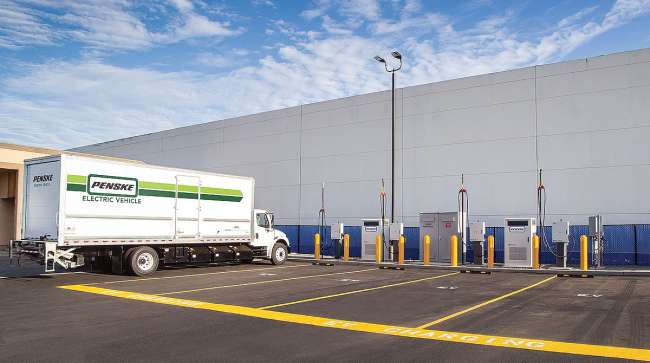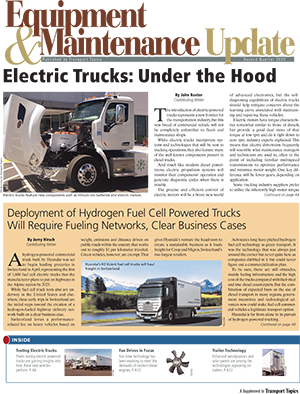One Major Fleet’s Experience Testing Electric Trucks

[Stay on top of transportation news: Get TTNews in your inbox.]
Fleets that have been at the forefront of testing electric trucks are gaining insights into how these new vehicles perform in real-world freight operations.
One of those companies, Penske Corp., is working with electric drivetrains in all vehicle classes and with many different providers, said Paul Rosa, senior vice president of procurement and fleet planning at Penske Truck Leasing.
“These vehicles are being used in runs of anywhere from 20 to 200 miles daily,” he said. “They are utilized for urban, shorthaul and pickup and delivery applications in northern and southern California and in the metro New York regions.”

While range is a common concern about battery-electric vehicles, Rosa said that hasn’t been a problem in these applications.
“Range has been sufficient for these runs, which are wholly contingent on customer needs,” he said. “We are learning along with our customers. The ranges can be extended as business needs dictate.”
Driver feedback has been positive, Rosa said, including such remarks as: “Torque is amazing.” “It feels more stable.” “It has a smoother ride.” “There is no noise, no squeaks, no smell of diesel fuel.”
Asked if the electrically powered trucks are outperforming diesel models, he responded, “It is way too early to make a determination. We will need years of data to compare EV units to diesel units.”
Vehicle charging infrastructure is another key consideration for deploying electric trucks. Penske has installed direct-current fast-charging infrastructure for medium- and heavy-duty electric vehicles at six locations in Southern California, said Andrew Cullen, senior vice president of fuels and facility services at Penske Transportation Solutions.
This installation was partially subsidized through a grant from government clean-air agencies and the Ports of Los Angeles and Long Beach.
“Charging typically begins when the driver comes back from his or her route and plugs in the vehicle. Route return times vary throughout the day depending on customer operations. In just a few hours, the truck is fully charged and ready for its next route,” Cullen said. “We are in the process of installing a network solution that will help us control and manage our charging at a higher level. The network solution will allow us to control charging to avoid peak hours, as well as control the speeds of charge.”
Asked about cost analysis, he replied, “We are in the early stages of our project and are just beginning to fully evaluate EV charging costs relative to diesel. The real cost of EV charging must include the capital investment, operating costs including charging infrastructure maintenance and utility rates, and networking services. We will be using all of these factors to evaluate the full cost of EV charging throughout the project.”
Want more news? Listen to today's daily briefing:


